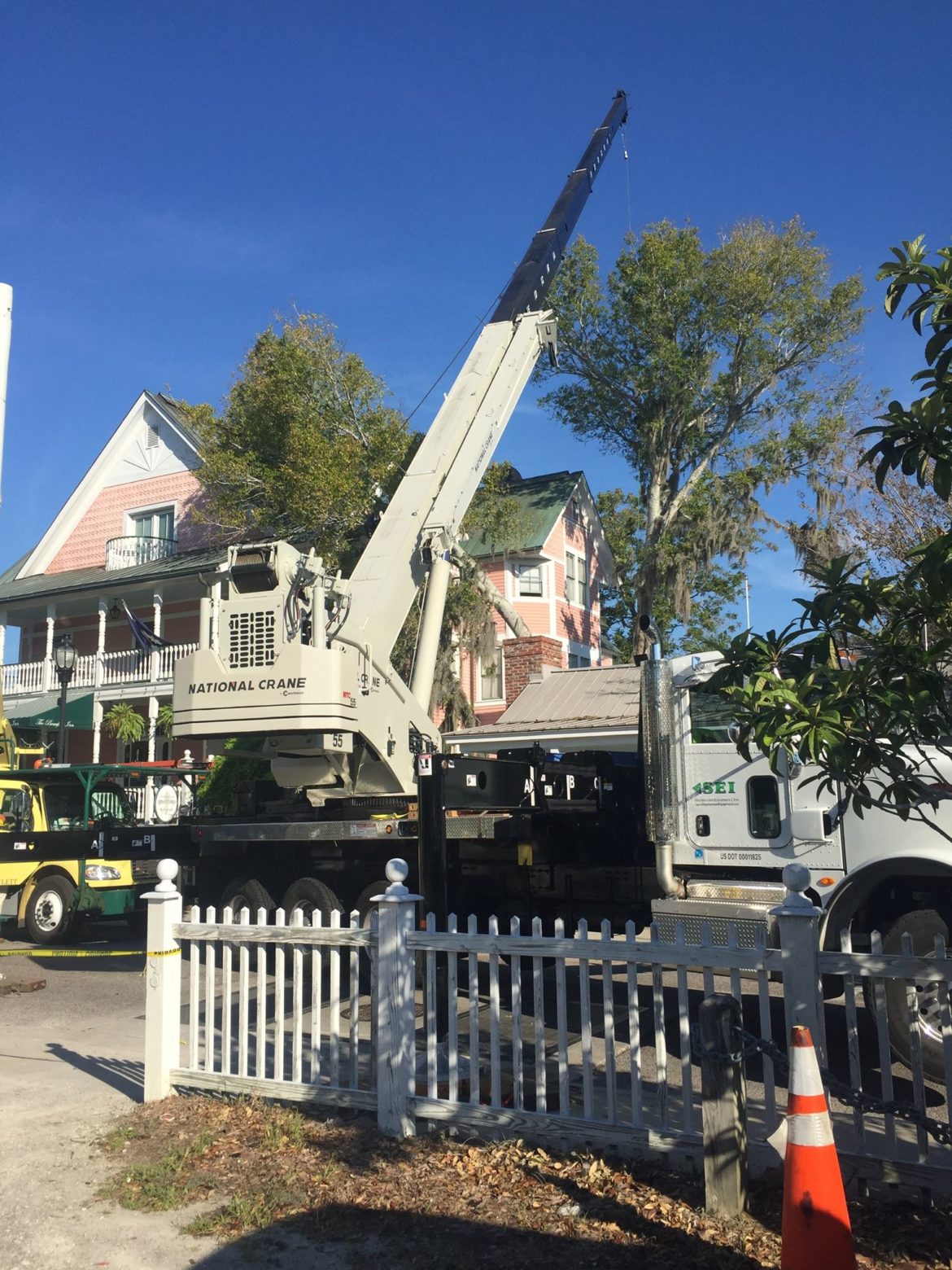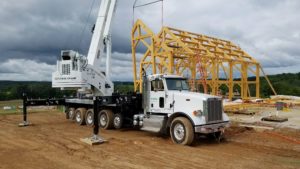The newest addition to National Crane’s product line is the 55-ton NTC55, which Manitowoc introduced at ConExpo. Competing with conventional truck cranes, this truck-mounted unit can maneuver in tight working conditions, has a compact outrigger configuration like a truck crane, and can extend its outriggers for greater reach and capacity.
Its design has been influenced by taxi crane customers who needed a more maneuverable, transportable 40-ton capacity truck crane that could also take on the jobs of higher-capacity boom trucks that require a larger area for outrigger setup.
Stephenson Equipment Inc., Harrisburg, Pa., was one of the dealers that was instrumental in providing a voice of the customer to Manitowoc. Steve Tucci, crane division sales manager for Stephenson Equipment Inc., said customers were requesting a more modern commercial chassis that is shorter and more compact than a 40- or 50-ton boom truck. “We worked closely with Peterbilt to make the truck as light as possible achieve legal road weights,” he said. A four-axle commercial truck chassis comes standard.
“Since ConExpo, we have taken delivery of several six-axle National NTC55s mounted on Peterbilt 365s, which are built to meet Federal Bridge Law (FBL) regulations,” Tucci added. “This package allows the crane to be configured to meet the FBL requirement and maintain legal axle loads in most states.” He said that Stephenson Equipment is currently stocking four- and six-axle versions of the National NTC55128.
The key to the NTC55’s versatility is its ability to setup with a reduced 20-foot outrigger span, such as with traditional 40-ton truck cranes. The crane meets all class lifting requirements with this configuration, thanks to a main boom that’s 18 feet to 34 feet longer than competing truck cranes. If space allows, the NTC55 can extend its outriggers fully to a 24-foot span, which improves reach and capacity and opens up more job opportunities when compared to a 40-ton truck crane.
“The NTC55 will not only do the work of a 55-ton boom truck when space allows, but it exceeds the capabilities of 40-ton truck crane with its 50-ton rating at a reduced 20-foot outrigger span,” said Justin Pilgrim, global product director for boom trucks and carrydeck cranes at Manitowoc.
The National Crane NTC55 can operate while set up from one of four outrigger positions: 100 percent, 75 percent, 50 percent, and fully retracted. At 75 percent, the outriggers reach 20-foot span. The “X” shape of the front outriggers’ footprint eliminates the need for a single front outrigger, saving additional setup time.
The NTC55 offers a standard hydraulically self-removable counterweight system that consists of one 3,000-pound counterweight slab and two smaller 1,250-pound counterweights. If axle weight limits in a given area are particularly stringent, or an end user can’t road the crane at full weight, the counterweight can be hydraulically removed or stowed on the vehicle for transport.
Two jib options are available on the National Crane NTC55: a 26-foot fixed-length, offsettable jib, and a two-section, manually telescopic offsettable jib that can be adjusted from 26 to 45 feet.
The NTC55 is the first National Crane to have a 20° hydraulically tilting operator’s cab. It incorporates National’s proprietary and fully integrated Rated Capacity Limiter (RCL) and control system. Other class-leading features include adjustable joystick speeds, onboard diagnostics, and real-time truck status updates that include regen notification and service capabilities—all without the need for a laptop. Several utility-enhancing options and custom Lift Solutions are available, such as an auxillary hoist, a wireless radio remote control, a wireless anti-two-block system, and a wind speed indicator.
Tucci said an internal LMI length wire with a wireless radio A2B is available for customers who prefer this option over the standard external wire. “This is especially useful for working in and around trees,” he said.
Rich Nichols, owner of Bob’s Crane Service in Kennett Square, Pa., was the first customer to run the National Crane NTC55. One of the first projects he used the crane on was in Beaufort, S.C., to clean up after Hurricane Matthew. “Not only was it the perfect crane to take because it has a lot of counterweight, but it is road legal,” he said. “It’s on a smaller, shorter Peterbilt, and it has a newer Cummins 12-liter engine that has a lot of power.” He also noted that it makes a sharp turn, allowing it to work in a lot of areas where you can’t fit a truck crane.
Nichols said tree work is big right now in his area. “It is a beautiful crane for tree work because you can get it without the external two-block wire, which usually causes branches to get caught in the wire,” he said. “You can actually go through branches.”


